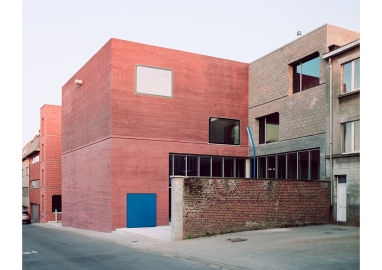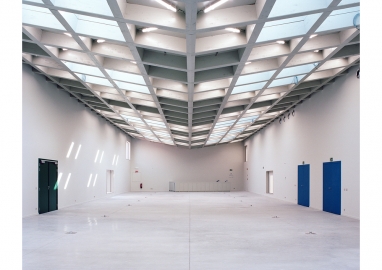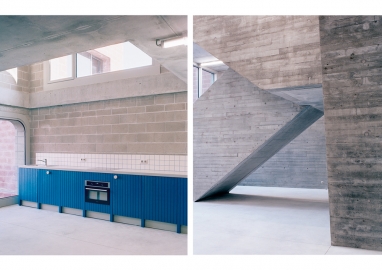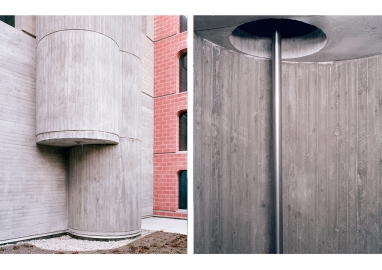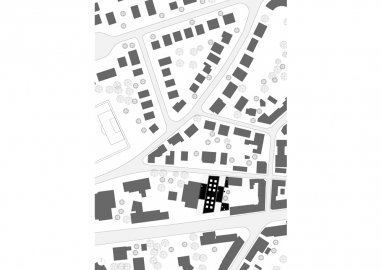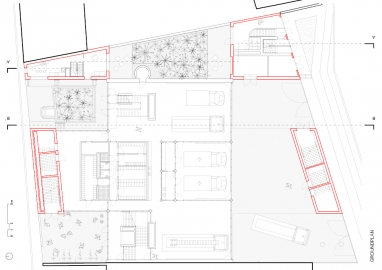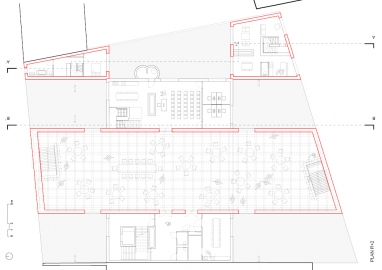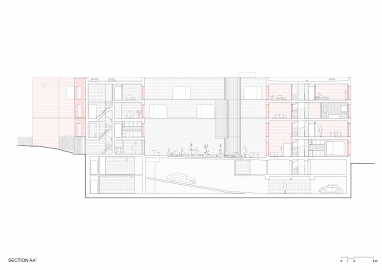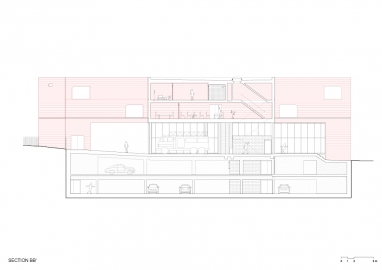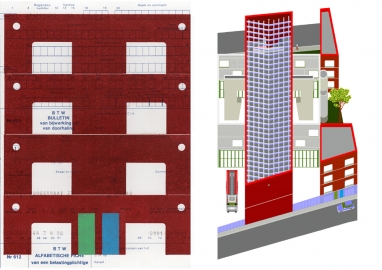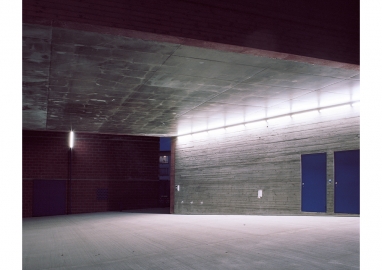Fire Station, Multi-Purpose Space, and Emergency Housing
Building with 3 distinct programmes built on the site of the former town hall: a fire station, a multi-purpose hall and emergency housing. In the context of the master plan for the core of peri-urban Dilbeek, these 3 urban functions constitute an important link in the interweaving of residential, civic, commercial, hospitality and employment uses.
The project locates in the outskirts of Brussels in peri-urban Flanders. The site functions as a strategic link between a traffic-intense intercommunal road and the residential heart of the municipality. The plot divides into public and private sections where 3 distinct urban programmes develop over the depth of the site, each one oriented around its outdoor space. The building has no backside, but 2 main façades. The fire station is turned to traffic, whereas the multi-purpose hall orients its forecourt towards the residential part of the town. The emergency housing develops around a communal garden, integrated into the existing building fabric of both streets. For reasons of future reuse of the bricks, the materials were chosen to create a robust building, easy to maintain while keeping finishings simple; without coating the building shows its structure. Furthermore, we chose not to use coatings, which are fragile and difficult to integrate into a recycling process for concrete bricks.
The project ensures specific visibility to each programme of the building and organizes the fire station as a well-oiled machine. Distances are short and spaces intend to interconnect like parts of a whole. The large garage, at the center of the plot, is the heart of the machine. It opens onto the training ground for the fire brigade through large doors. The ground floor needs to accommodate the turning circles of the trucks. The fire station opens on two pedestrian passages from the residential backstreet, through which firefighters can quickly access. The multifunctional hall is flexible enough for Dilbeek’s citizens to use it both for their private and public events. The multifunctional hall can be completely privatized for the fire men through a side door easily connecting the two programs. And on the opposite, meeting rooms can be rendered into public spaces for citizens’ activities. The building’s intention is to serve as an open flexible sustainable collective infrastructure: a play area that accommodates different uses on a relatively small plot by spatially rethinking the integration of the 3 distinct functions and their public/private characteristics.
A first structure is given in the form of a concrete table. It allows for large spans in the truck garage minimizing space associated with columns. The multi-purpose hall is a complementary structure and functions as a large red beam holding the table, i.e. the ceiling slab of the garage. In addition to this structural role, the concrete of the hall allows for acoustic insulation. The structure is a surface for visual experimentation/conversation between SNCDA and KM. The drawing, applied to concrete bricks and formwork concrete, results in a fine work of joints and a perfect grid that allows the same original line of the project to be read both inside and outside. The structure becomes ornamentation of a robust building that is easy to maintain. The design of the oversized windows with their rounded corner are also extensions of the drawings. Adaptive technologies create environments that meet the individual needs of users. A rainwater recovery system supplies the toilets, as well as provides the firemen with water for their exercises. Photovoltaic panels provide electricity, thermal panels produce hot water.The building is passively cooled using geothermal energy.

